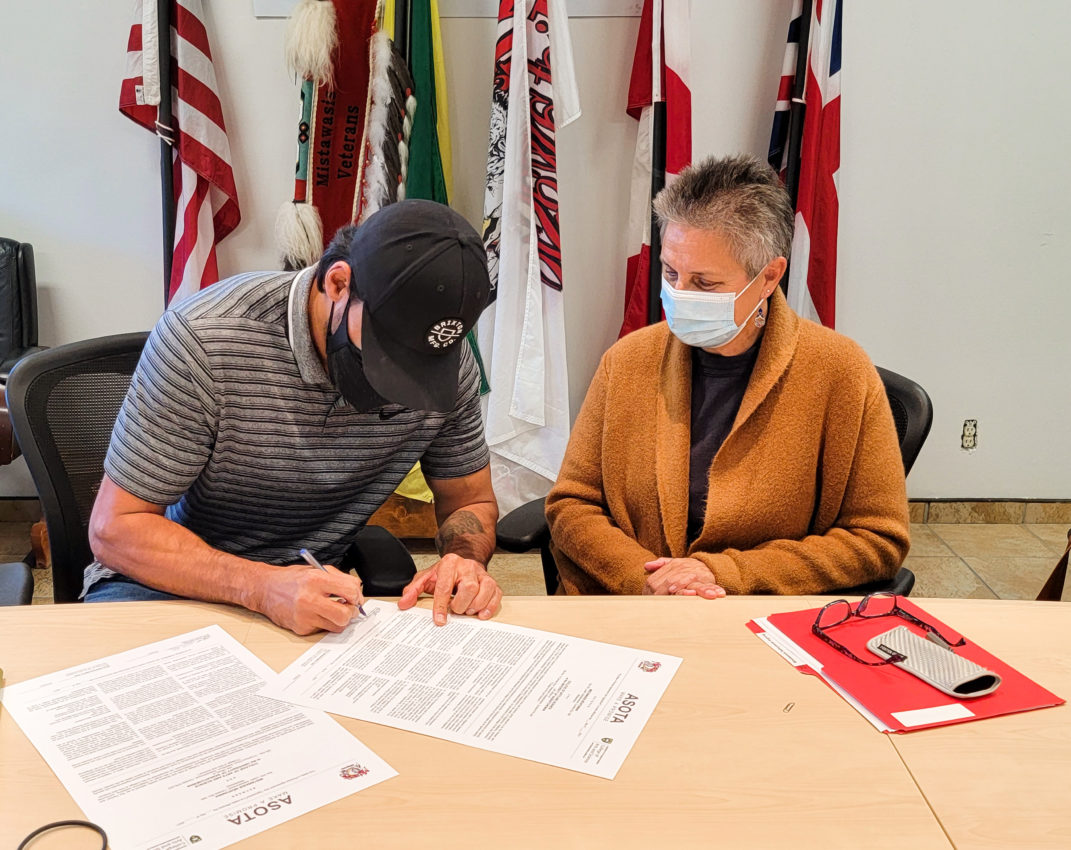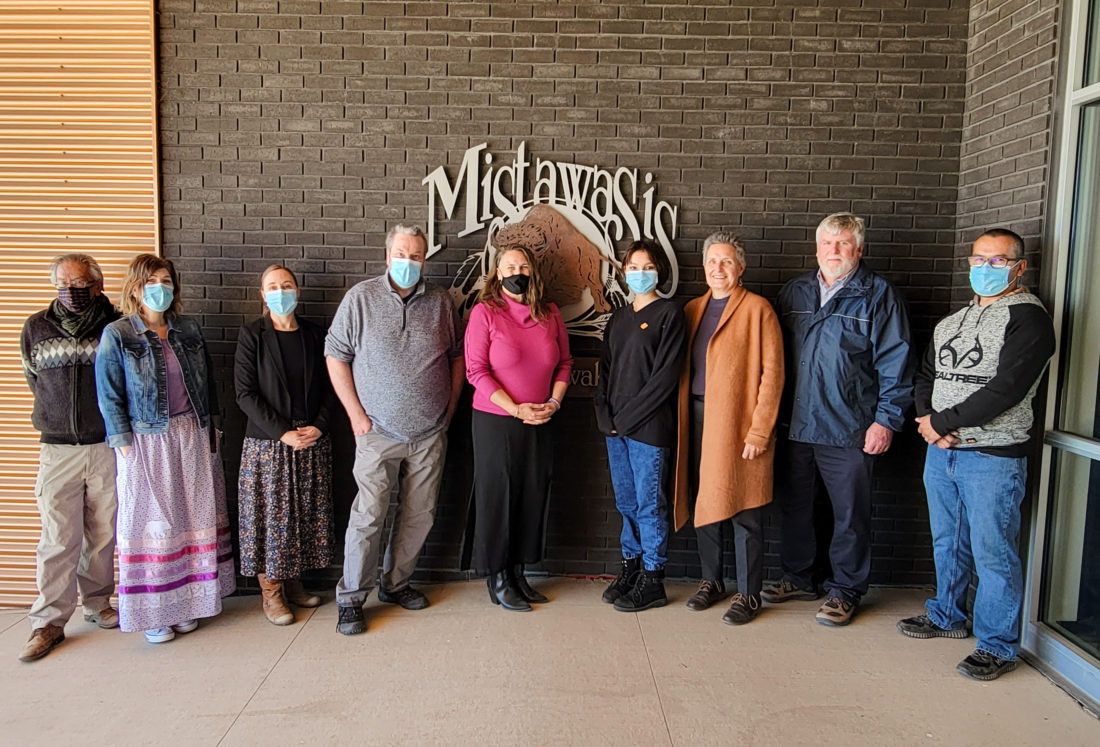
In May 2022, a new course will allow fourth-year geography students from the University of Saskatchewan to work alongside students of Mistawasis Nêhiyawak, a First Nation located 120 kilometres north of Saskatoon.
That course, titled GEOG 465: Environment and Health in Indigenous Communities, will be three weeks in duration and offered long-term. During the first week, Mistawasis Nêhiyawak High School students will visit the U of S and develop research proposals with ten geography students. The geography students will spend the second week in Mistawasis, collecting or analyzing existing data.
Once back in Saskatoon, the geography students will have the third week to write about their results in consultation with the high school students.
Anthony Johnston, the special projects manager at Mistawasis Nêhiyawak, says that the students will create projects to search for solutions to environmental problems affecting the Mistawasis Nêhiyawak community.
“Our students will be part of that research… part of that shared work to deal with environmental and climate matters,” Johnston said.
The course is part of a five-year partnership between the two communities, called an Asota, that was signed Oct. 22 2021. According to Johnston, a primary purpose of the Asota is to provide better access to resources for research and teaching to the Mistawasis Nêhiyawak community, and eventually, surrounding First Nations communities.
“The agreement was normally called a memorandum of understanding, but we wanted to give it a different name that would better represent what we want to do or what we hope for from the agreement,” Johnston said. “So we gave it a Cree name, that in our language, means ‘make a promise.’”
While designing the new geography and health course, Corinne Schuster-Wallace, a water-health researcher in the department of geography and planning at the U of S, approached Johnston with the idea to involve Mistawasis Nêhiyawak High School students prior to the COVID-19 pandemic.
“I’ve always been a firm believer in bringing the world into the classroom and the classroom into the world,” Schuster-Wallace said. “It’s about building bridges for students, between community and university, and providing a different learning environment and a different learning perspective.”
Schuster-Wallace emphasizes that any directions the geography course takes will be determined by the Mistawasis Nêhiyawak community.
“The idea is … that the small, targeted research questions are driven by community needs,” Schuster-Wallace said.
Over the past decade, Mistawasis Nêhiyawak has suffered severe flooding and high-water, prompting its leaders to seek external help to find long-term solutions.
Aside from facilitating solutions to community challenges, Johnston says a primary benefit of Mistawasis Nêhiyawak’s partnership with the U of S, as well as past collaborations with external organizations, is youth engagement.
“For a number of decades, we weren’t happy with the high school education that our young people were receiving and there wasn’t a great deal of interest from our young people to consider post-secondary,” Johnston said.
Mistawasis Nêhiyawak High School was built in 2018. Prior to its opening, most secondary students from the community were bussed to the town of Leask, approximately twenty kilometres south of Mistawasis Nêhiyawak. Johnston says that having a school within students’ immediate community has allowed for the development of comprehensive land-based learning curricula for all grades.

“I think this university course is timely, because our high school students have a better understanding of the land. They are learning about the problems that we have to deal with in Mistawasis,” said Johnston.
Johnston views the collaborations that Mistawasis Nêhiyawak has initiated over the years as essential to overcoming challenges in the community.
“We know that sometimes we lack the expertise and experience, and especially the resources to fulfill our hopes. So we know that partnership and alliances and friendship with others is very important,” Johnston said. “And that’s how we get things done.”
—
Sandra LeBlanc | News Editor
Photos: Supplied by Vanessa Hyggen